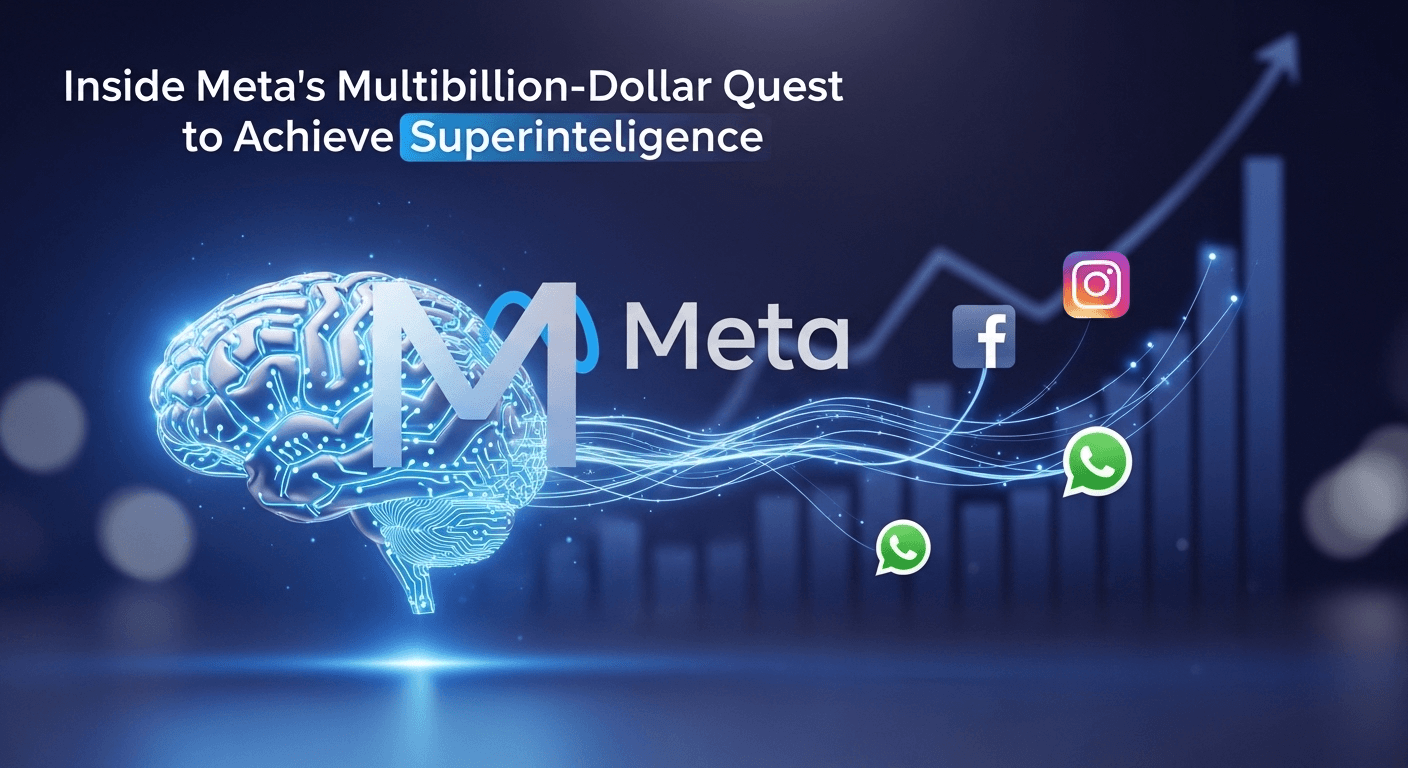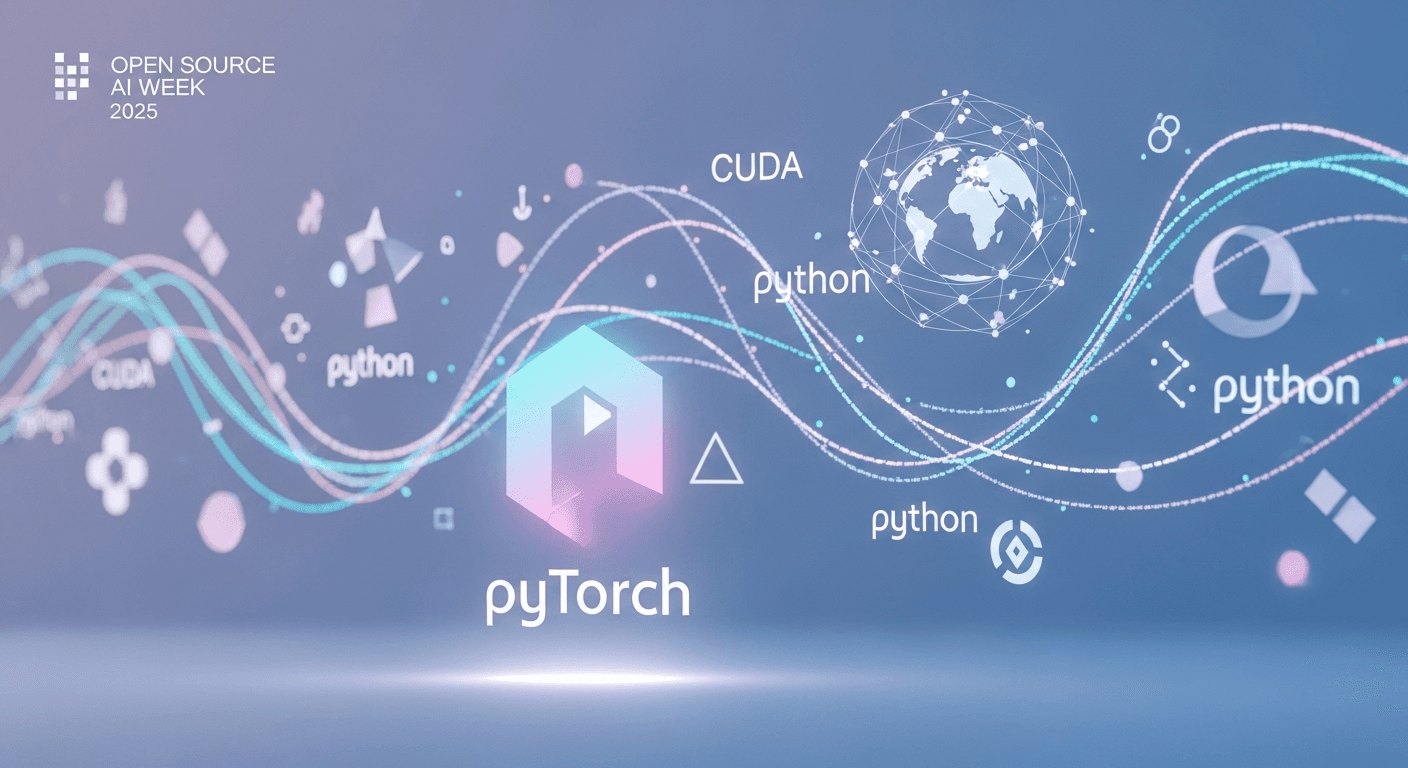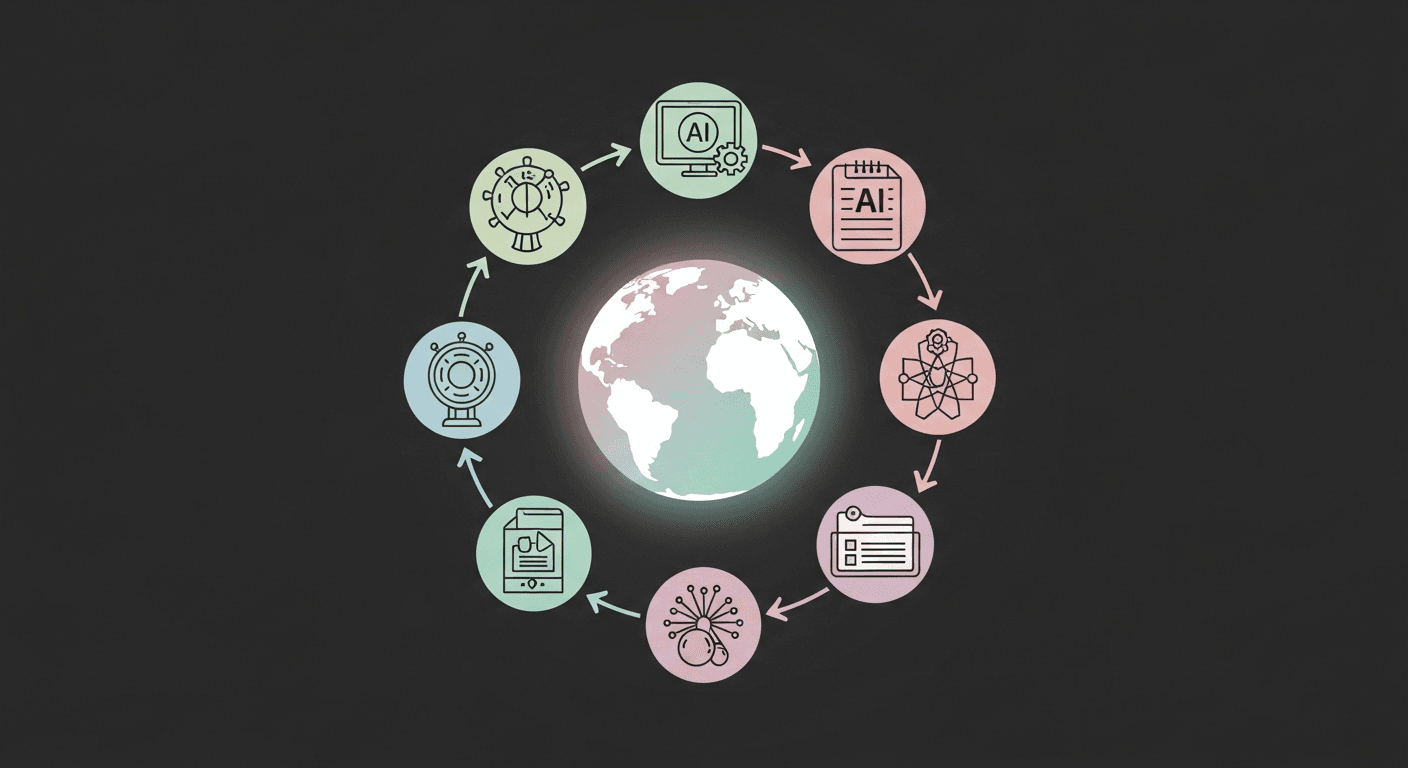Inside Meta’s Multibillion-Dollar Quest to Achieve Superintelligence

Meta’s Bold Vision: The Next Frontier in Superintelligence
Meta is investing tens of billions of dollars in artificial intelligence with an ambitious goal: to develop systems that not only reach but eventually exceed human-level intelligence. Whether referred to as AGI (artificial general intelligence) or superintelligence, the company believes this technology will serve as the foundation for the next decade of products across Facebook, Instagram, WhatsApp, and its array of devices.
Mark Zuckerberg has committed to building general intelligence and making much of the technology open source. This approach excites developers while also raising important safety concerns. Achieving this vision involves unprecedented investments in data centers, chip manufacturing, and talent acquisition. Investors are taking notice, markets are reacting, and the broader tech industry is joining the race. Here’s a closer look at what Meta is doing, why it’s significant, and the challenges it faces.
Note: This overview synthesizes information from Meta’s announcements, earnings reports, and independent coverage to clarify the company’s objectives. Inline citations link to primary sources and reputable journalism.
Understanding Superintelligence and AGI at Meta
In early 2024, Zuckerberg reiterated Meta’s commitment to building general intelligence and emphasized the importance of making it as open as possible. He envisions AGI as an ongoing development rather than a simple solution to achieve overnight. Meta aims to advance capabilities over the coming years, integrating these systems into various products. This includes enhancing app functionalities with intelligent assistants, tools for advertisers, and creating multimodal systems capable of processing text, images, audio, and video in real time. Media discussions have broadened this to include the concept of superintelligence, depicting systems that surpass human intelligence across numerous areas.
While definitions may vary, the essential takeaway is clear: Meta is focused on creating more than just chatbots. The objective is to build a core AI platform that can reason, plan, see, listen, and act across its extensive app ecosystem on a global scale.
- AGI: A system capable of performing a broad range of cognitive tasks at levels comparable to humans.
- Superintelligence: A system that significantly outperforms humans across the majority of tasks.
In the near term, Meta’s roadmap emphasizes enhancing reasoning abilities, long-context understanding, and multimodal perceptions while scaling its infrastructure to support larger models.
Sources: The Verge on Zuckerberg’s AGI plan; Meta AI’s Llama 3 update.
Meta’s Infrastructure: Chips, Data Centers, and Energy Needs
Meta’s venture into AI represents not just a leap in research but a massive infrastructure development. The company is in the process of acquiring large quantities of GPUs, designing proprietary accelerators, expanding data centers, and ensuring a stable power supply.
GPUs: The New Essential Resource
Zuckerberg has mentioned that Meta aims to procure approximately 600,000 Nvidia H100-equivalent GPUs for training and inference. Public reports indicate that Meta plans to acquire hundreds of thousands of H100 GPUs by the end of 2024. This competitive demand for computing power reflects a broader industry trend, with Microsoft, Google, Amazon, and others also vying for resources.
Why it matters: Training advanced models necessitates massive parallel computations, and serving those models to billions of users requires even more optimized infrastructure.
Sources: The Verge; Reuters on Meta’s GPU plans.
Custom Chips: Introducing MTIA
To lower costs and reduce dependency on third-party suppliers, Meta is developing its own accelerator, the Meta Training and Inference Accelerator (MTIA). The second generation, MTIA v2, is designed to enhance efficiency for recommendation and AI tasks. While GPUs will continue to play a vital role in training extensive models, MTIA can help cut down inference costs for specific applications and optimize performance throughout Meta’s operations.
Source: Meta Engineering on MTIA v2.
Data Centers and Their Energy Impact
Larger models necessitate larger facilities. Meta is expanding its AI-optimized data centers, featuring innovations like liquid cooling and high-density racks suitable for accelerators. The rapid growth in AI is influencing electricity demand, with the International Energy Agency forecasting that data centers, AI, and crypto could double their energy usage by 2026 if trends persist.
Meta, like many of its peers, is committing to significant renewable energy contracts and prioritizing efficiency, yet the net impact remains considerable burdens on power grids.
Turning Research into Products: The Path of Llama and Meta AI
Llama 3 and 3.1
Meta’s open model series, Llama, supports its developer ecosystem and internal product functionality. In April 2024, Meta launched Llama 3, which includes robust small and medium-scale models (notably 8B and 70B parameters) that have performed well across various benchmarks while remaining relatively efficient in operation. By July 2024, Meta advanced this with Llama 3.1, which features a long-context upgrade and a new larger model with 405 billion parameters for enhanced capabilities. Open weights remain available for smaller versions under a permissive license, facilitating adoption among startups and researchers.
Sources: Meta AI: Llama 3 announcement; Meta AI: Llama 3.1 update.
Meta AI Assistant Across Platforms
In 2024, Meta rolled out a general-purpose assistant, Meta AI, powered by Llama models. This assistant is integrated into Facebook, Instagram, Messenger, and WhatsApp, offering conversational assistance, search capabilities, creative tools, and multimodal features. This strategic direction positions Meta AI as a daily companion seamlessly integrated into the apps where billions of users already engage, eliminating the need for a separate interface.
Source: Meta AI assistant announcement.
Multimodal Applications Everywhere
Meta is working to incorporate multimodal AI into practical tools. An example is its Ray-Ban Meta smart glasses, which feature an AI assistant capable of understanding and describing the real world through its onboard camera, answering questions, and translating languages in real time. Within its apps, Meta’s generative tools assist advertisers and creators in crafting text, images, and variations that align with their campaigns. The long-term vision is to provide real-time, context-aware AI solutions wherever users interact, in a privacy-respecting manner.
Sources: Meta on AI in Ray-Ban Meta glasses; Meta’s generative AI for advertisers.
Meta’s Justification for Billions in Investment
Meta’s core objective revolves around capturing attention and fostering connections. Enhanced AI can facilitate personalized feeds, moderate harmful content, automate creative processes for advertisers, and offer users useful assistants. The company’s leadership asserts that by aligning research, infrastructure, and product development early on, they can create advantages that are difficult for competitors to replicate swiftly.
Investor Responses and Capital Expenditure Guidance
During earnings calls in 2024, Meta announced plans to increase capital expenditures for AI infrastructure and emphasized that it expects returns to materialize over several years. This news prompted significant market fluctuations, capturing the tension between short-term profitability and long-term strategic positioning. The company framed this expenditure as essential for competing on the cutting edge and supporting billions of daily users with next-generation AI solutions.
Sources: Meta Q1 2024 earnings release; CNBC coverage of Meta’s AI capex and market response.
Facing Competitive Pressures
Meta is not operating in isolation. Microsoft and OpenAI are closely collaborating on frontier model training integrated with Windows and Office. Google is advancing its Gemini initiative across Search, Workspace, and Android. Meanwhile, Apple has introduced Apple Intelligence, a privacy-conscious AI integrated into iOS and macOS. In this highly competitive landscape, hesitant investment could mean surrendering both brand reputation and developer engagement.
Sources: Microsoft Build 2024 AI announcements; Google I/O 2024 Gemini updates; Apple Intelligence announcement.
Balancing Open Source and Privacy: Meta’s Strategy
Unlike some of its competitors, Meta has embraced a strategy of releasing model weights for various Llama versions under a permissive license. The reasoning behind this decision is that open models can broaden the developer community, expedite research feedback, and establish Meta’s stack as a standard in the industry. However, critics raise concerns about the potential for misuse of powerful models or adaptability for harmful purposes.
Meta contends that responsible open releases coupled with safety evaluations and usage policies can foster innovation while providing safeguards. This discussion interacts with emerging regulatory frameworks like the EU AI Act, which mandates obligations by risk category and includes transparency requirements for general-purpose models.
Sources: Llama license; Overview of the EU AI Act; NIST AI Risk Management Framework.
Meta’s Path to Monetizing AI Investments
Meta’s strategy for monetization operates at multiple levels. The company doesn’t need to sell models directly to profit from its AI investments; it can boost user engagement and advertising revenues while opening new business avenues.
- Advertising Efficiency: Improved generative tools for creative projects, more precise targeting signals (within privacy guidelines), and enhanced outcome optimization can increase advertiser ROI and consequently raise ad prices.
- Business Messaging: AI agents in WhatsApp and Messenger can facilitate customer support, commerce, and lead qualification for small businesses, with potential monetization through usage fees or value-added services.
- Creator Tools: AI that enables creators to produce content more rapidly can boost available content for Reels and other formats, thus increasing user engagement.
- Devices and Wearables: Implementing AI-first experiences in Ray-Ban Meta glasses and future augmented reality devices can generate new premium hardware and service offerings.
- Platform Effects: By open-sourcing its models, Meta encourages a diverse ecosystem to build on its platform, enhancing its relevance and expanding its options.
Source examples: Meta for Advertisers; Meta AI Assistant Scope.
Navigating the Risks and Trade-offs
Financial Risks
With capital expenditures front-loaded, revenue impacts may take years to materialize. Markets may react negatively to prolonged margin compression if product successes are not realized swiftly. Meta must demonstrate that its AI efforts yield higher engagement, improved advertiser results, and new revenue streams.
Technical Execution Challenges
Training increasingly complex models is only part of the equation; efficiency, reliability, and safety during inference are critical at Meta’s scale. Custom silicon like MTIA will need to integrate seamlessly with GPUs, software, and developer tools to realize its potential.
Safety and Governance Scrutiny
The rise of more advanced models introduces risks for misuse, including persuasion and code generation. The open release strategy may lead to increased scrutiny. Meta will need to prove its commitment to rigorous model evaluations, red-teaming practices, and transparent incident responses aligned with standards like NIST’s AI Risk Management Framework and regulatory requirements in the EU and other regions.
Energy and Environmental Considerations
AI’s energy demands are significant. Even with ambitious renewable energy initiatives, Meta will be under close observation from communities and regulators regarding water usage, site selection, and contributions to grid stress. Innovations in model architecture, hardware efficiency, and data center operations will be as crucial as mere scale.
Anticipated Progress Over the Next 12-24 Months
- Model Milestones: Expect continued Llama releases with improved reasoning, tool utilization, and extended context understanding, along with stronger on-device models for privacy-preserving tasks.
- Product Integration: Meta AI will become more integrated across Facebook, Instagram, WhatsApp, Ray-Ban Meta glasses, and potentially Quest, providing real value beyond initial demonstrations.
- Inference Cost Reduction: Look for improvements in cost per query through model distillation, sparsity, batching, and custom accelerators like MTIA.
- Safety Transparency: Anticipate public evaluations, red-team summaries, and incident assessments that enhance trust with regulators and users.
- Ecosystem Growth: Expect to see more startups and businesses utilizing Llama models and tools, strengthening the open model community.
Conclusion
Meta is making one of the most significant and costly investments in technology by pursuing the development of superintelligence while also committing to open-sourcing much of the process. The potential rewards are immense if Meta can translate breakthroughs into practical applications that benefit billions while managing costs and risks. As it stands, the company is committed to doing whatever it takes to maintain its competitive edge.
Frequently Asked Questions (FAQs)
What distinguishes AGI from superintelligence?
AGI refers to artificial intelligence capable of performing a wide array of tasks at a level comparable to humans, while superintelligence describes systems that greatly exceed human performance across most domains. Meta emphasizes building general intelligence and gradually enhancing capabilities.
What is the number of GPUs Meta plans to acquire?
Recent communications and reports suggest Meta is targeting hundreds of thousands of Nvidia H100-equivalent GPUs, including around 350,000 H100s and approximately 600,000 overall by 2024. Exact figures may fluctuate based on supply and configurations. Sources include The Verge and Reuters.
Why does Meta opt for open-source models like Llama?
Meta believes that open models expedite progress, attract developers, and enhance the utility of its platforms. It releases various Llama versions under permissive licenses while keeping some larger models for internal use. This approach is contrasted with fully closed models and introduces safety considerations.
How will Meta generate revenue from AI?
Primarily by improving its core offerings: enhanced recommendations, safer feeds, and stronger advertising tools can boost revenue. New opportunities exist in AI agents for business messaging, creator tools, and AI-driven device experiences. There’s no need for Meta to sell models directly to achieve profitability.
What about regulatory concerns and safety measures?
Regulation is evolving rapidly, including the EU AI Act that enforces risk-based requirements. Meta will be required to perform thorough evaluations, implement usage policies, and maintain transparency to operate high-capability models while meeting global compliance mandates.
Sources
- The Verge: Zuckerberg Discusses Meta’s AGI Vision
- Reuters: Meta’s GPU Acquisition Goals
- Meta AI: Llama 3 Overview
- Meta AI: Llama 3.1 Update
- Meta AI: Overview of the AI Assistant
- Meta Engineering: Insights into MTIA v2
- International Energy Agency: Data Centres and Energy Consumption Report
- Meta Q1 2024 Earnings Release and Forecasts
- CNBC: Market Reactions to Meta’s AI Investments
- Meta: AI Integration in Ray-Ban Meta Glasses
- Meta: Advancements in Generative AI for Advertisers
- European Parliament: Final Approval of the EU AI Act
- NIST: AI Risk Management Framework
Thank You for Reading this Blog and See You Soon! 🙏 👋
Let's connect 🚀
Latest Blogs
Read My Latest Blogs about AI

Inside Open Source AI Week: How PyTorch, CUDA Python, and a Global Community Are Advancing AI
Open Source AI Week highlights how PyTorch, CUDA Python, and open models are pushing the frontiers of AI. Discover key events, tools, and practical insights for developers in 2025.
Read more


